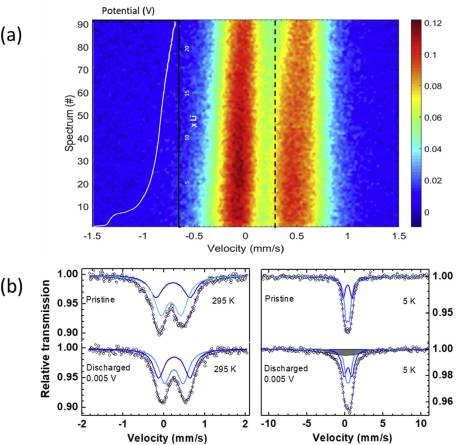
Abstract: The electrochemical mechanism and performance of FeSi4P4, vs. Na and Li were studied using a combination of operando X-ray diffraction, 57Fe Mössbauer spectroscopy, and SQUID magnetometry. This silicon- and phos-phorous-rich material exhibits a high capacity of 1750 mAh/g, retaining 1120 mAh/g after 40 cycles, and reacts through an original reversible mechanism surprisingly involving only slight changes in the chemical environ-ment of the iron. Magnetic measurements and 57Fe Mössbauer spectroscopy at low temperature reveal the re-versible but incomplete change of the magnetic moment upon charge and discharge. Such a mild reversible process without drastic phase transition (with the exception of the crystalline to amorphous transition during the first lithiation) can explain the satisfying capacity retention. The electrochemical mechanism appears thus to be significantly different from the classical conversion or alloying/dealloying mechanisms usually observed in Lithium ion batteries for p-group element based materials. The same iron silicon phosphide electrode shows also interesting but significantly lower performance vs. Na, with a limited capacity retention 350 mAh/g.
Keywords: Li-ion batteries, Phosphides, Silicides, Mechanism, Operando measurements, X-ray diffraction, Mössbauer spectroscopy, Magnetic properties